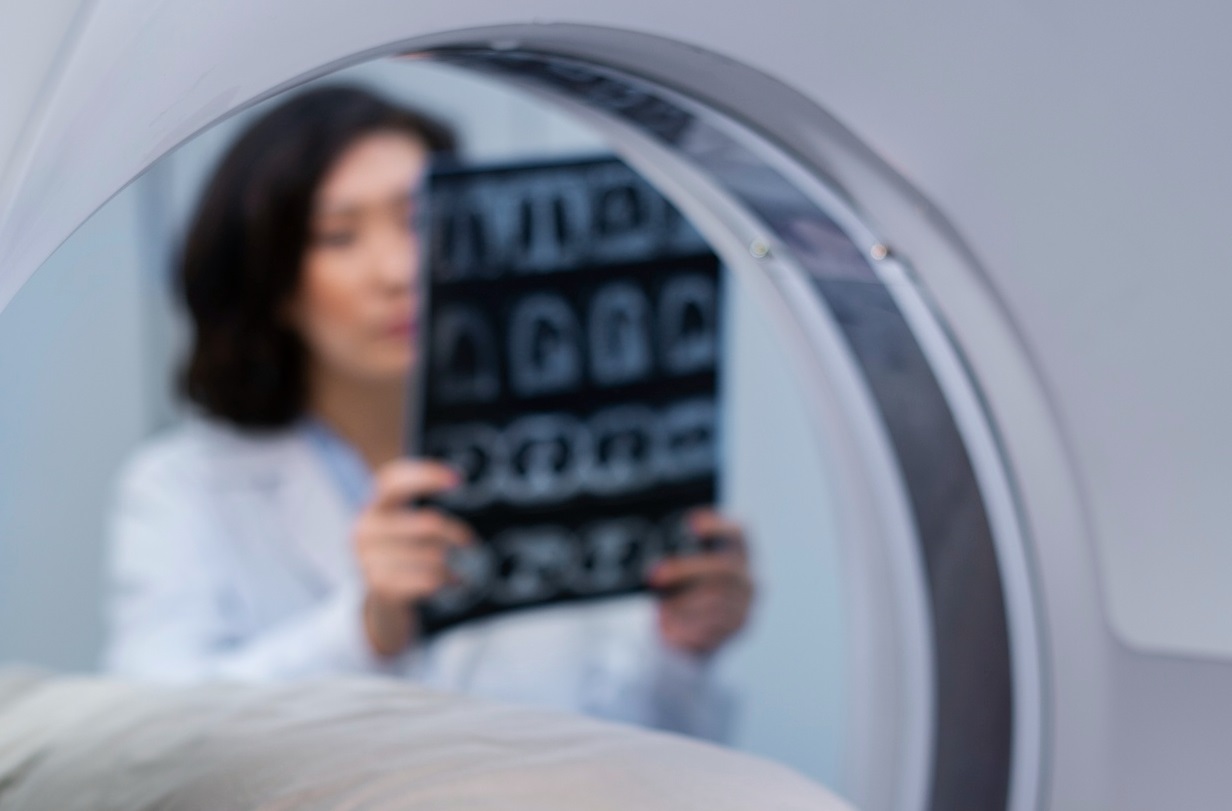BRUSSELS, BELGIUM, January 23, 2024: The global diagnostic imaging market will see a rate of growth of 5-6% by 2028. The development of the market for diagnostic imaging is triggered by the growing instances of chronic diseases, the increasing need for imaging diagnostics, the rising consciousness of preventive healthcare, and technological advances that are related to diagnostic imaging.
Diagnostic imaging is a variety of methods used by health professionals to look at and study the internal organs of the body for medical reasons. Imaging techniques are essential in the detection and monitoring of a variety of ailments and diseases, providing crucial information that helps surgeons and healthcare professionals understand the size, location, and extent of any abnormalities or tumors. This information improves surgical precision and allows for the development of targeted therapies, which highlights the importance of imaging diagnostics in medical research, patient care, and healthcare systems. The principal modalities and techniques are the X-ray imaging method, which is a classic method that utilizes ionizing radiation. Computed Tomography (CT), which provides 3D imaging using X-rays Magnetic Resonance Imaging (MRI), which makes use of strong magnetic fields as well as radio waves Ultrasound using sound waves produces images, as does nuclear medicine, which involves the utilization of radioactive tracers in imaging.
Get a Sample Report for the Diagnostic Imaging Market: https://meditechinsights.com/diagnostic-imaging-market/request-sample/
Technological innovations and health trends that are fueling the diagnostic imaging market
Several factors are driving the expansion of the diagnostic imaging market. Technological advances play a crucial role since continuous advancements in imaging technology continually improve the accuracy of diagnostic tests and efficiency. These technological advances are leading to the development of high-resolution imaging equipment that provides better image quality and allows for more thorough analysis. One example of this is the advancements in MRI technology that led to the development of advanced MRI systems. These systems provide sharper and more precise images, which improve accuracy in diagnosis.
The increasing prevalence of illnesses, especially chronic ones, is a major factor in the growing demand for diagnostic imaging. Additionally, the growing population of older people globally is a major reason, as the aging population will require more diagnostic procedures, leading to an increase in the market. The increased awareness of preventive healthcare practices can also lead to earlier diagnosis using imaging, further increasing the demand for diagnostic imaging. Together, these forces create an evolving landscape that helps support the steady expansion of the market for diagnostic imaging.
The Future Forward: AI 3.0 Printing and Point-of-Care Image Reshape Diagnostic Imaging Services
Recent advancements and developments regarding diagnostic imaging technology have dramatically changed the field, increasing capabilities and providing better patient care. Integration with artificial intelligence (AI) is an important trend, as AI algorithms allow for more precise imaging analysis and interpretation, helping healthcare professionals with diagnosis and treatment scheduling. For instance ,
- On November 20, 2023, Siemens Healthineers launched the Acuson Maple Workhorse Ultrasound System, which is an advanced, flexible, and cost-effective ultrasound device that is designed to aid in quick diagnosis and evaluation in a variety of clinical settings. The system is equipped with artificial intelligence (AI)-driven features that enhance routine clinical procedures for patients who have different levels of expertise.
The development of 3D printing technologies has led to new diagnostic imaging applications. Clinicians are now able to build physical models of images, aiding in surgical planning and offering a tangible representation of the anatomical structures. This is especially useful for complex surgeries, where an accurate knowledge of the anatomy of the patient is essential. Imaging devices that are portable and point-of-care provide another important technological advancement. Small and portable imaging devices enable immediate diagnostic imaging, which reduces the requirement for patients to travel to imaging facilities. This is especially useful for emergency situations as well as remote settings for healthcare where instant diagnosis is crucial. For instance,
- On February 20, 2022, FUJIFILM Sonosite, Inc. added a new generation of point-of-care ultrasound (POCUS) options by introducing Sonosite’s LX systems. The system includes the most comprehensive imaging of the clinical environment and a display that has extended, rotating, and tilting capabilities. This will allow for better real-time collaboration between health professionals.
North America accounts for the biggest share of the global market.
The market size differs between regions, with more established services in advanced nations. North America dominates the global market because of its strong research and development initiatives and a modern healthcare system that includes medical facilities with modern diagnostic imaging tools. The emphasis of the region on research in the field of medicine and clinical trials also drives the market for medical imaging. Furthermore, favorable reimbursement and insurance policies, particularly those in the U.S., contribute to the access and cost-effectiveness of diagnostic imaging for patients, which is subsequently driving the growth of the market. In addition, the Asia-Pacific region has seen rapid growth over the forecast timeframe. The countries in the region have invested in healthcare infrastructure and have also adopted advanced diagnostic imaging technology to meet the growing demands for diagnostic imaging.
Landscape of the Competitive Landscape
The major players in the market are Siemens Healthineers AG (Siemens AG), Fujifilm Holdings Corporation, GE HealthCare Technologies Inc., Koninklijke Philips N.V., Samsung Group, Shimadzu Corporation, Hologic, Inc., Koning Corporation, Agfa-Gevaert N.V., Canon Medical Systems Corporation (Canon Inc.), Carestream Health, Inc., CurveBeam AI, Ltd., Esaote S.p.A., and many other companies.
Organic as well as inorganic growth strategies adopted by the players to establish their position on the market
Companies operating in this market are adopting organic and non-organic growth strategies like partnerships, acquisitions, and collaborations to increase market share. For example,
- In the fall of 2023, Carestream Health revealed its partnership with EXAMION to bring innovative, future-oriented healthcare imaging solutions to Germany. Through this partnership, Carestream strives to enhance the experience of patients, improve outcomes for clinical trials, and streamline radiography workflows by providing diagnostic imaging solutions for healthcare facilities across Germany and Europe.
- On November 20, 2022, Siemens Healthineers inaugurated its ultrasound manufacturing facility in Kosice, Slovakia, marking the first time that it has been established in Europe. The facility has an initial production capacity of 120 ultrasound systems per week. It is a planned expansion of the manufacturing capabilities of the company for ultrasound products.
The market for diagnostic imaging continues to grow with continuous research, technological advancements, and a growing emphasis on personalized medical diagnostics that are precise and precise, as well as aggressive growth strategies for organic and inorganic that are followed by players.
Browse Our Latest Research Report
Neonatal & Fetal (Labor & Delivery) Care Equipment Market Size, Demand, Industry Growth and Forecast to 2028
Diagnostic Imaging Market Size and Trends Shaping the Future of Diagnostic Imaging for Forecast 2023 to 2028
Diabetes Injection Pens Market: Global Industry Analysis, Market Share, Size, Trends and Forecast to 2028
Autoinjectors Market Size, Revenue, Trends and Industry Demand from 2023 to 2028
Surgical Retractors Market Size, Trends, Growth Analysis and Forecast to 2028
Global Patient Monitoring Devices Market Projections Indicate a Strong ~8% Growth by 2028
mHealth Solutions Market: Disrupting Traditional Healthcare Practices

